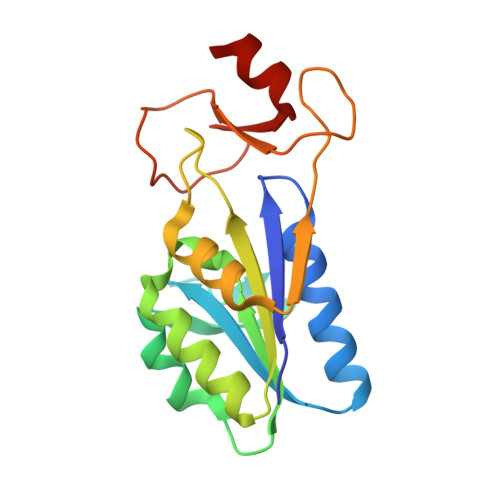Binding of ATP to TK1-like Enzymes Is Associated with a Conformational Change in the Quaternary Structure.
Segura-Pena, D., Lutz, S., Monnerjahn, C., Konrad, M., Lavie, A.(2007) J Mol Biol 369: 129-141
- PubMed: 17407781
- DOI: https://doi.org/10.1016/j.jmb.2007.02.104
- Primary Citation of Related Structures:
2ORV, 2ORW - PubMed Abstract:
Human thymidine kinase 1 (hTK1) and structurally related TKs from other organisms catalyze the initial phosphorylation step in the thymidine salvage pathway. Though ATP is known to be the preferred phosphoryl donor for TK1-like enzymes, its exact binding mode and effect on the oligomeric state has not been analyzed. Here we report the structures of hTK1 and of the Thermotoga maritima thymidine kinase (TmTK) in complex with the bisubstrate inhibitor TP4A. The TmTK-TP4A structure reveals that the adenosine moiety of ATP binds at the subunit interface of the homotetrameric enzyme and that the majority of the ATP-enzyme interactions occur between the phosphate groups and the P-loop. In the hTK1 structure the adenosine group of TP4A exhibited no electron density. This difference between hTK1 and TmTK is rationalized by a difference in the conformation of their quaternary structure. A more open conformation, as seen in the TmTK-TP4A complex structure, is required to provide space for the adenosine moiety. Our analysis supports the formation of an analogous open conformation in hTK1 upon ATP binding.
Organizational Affiliation:
Department of Biochemistry and Molecular Genetics, University of Illinois at Chicago, 900 South Ashland Avenue, Chicago, IL 60607, USA.

















